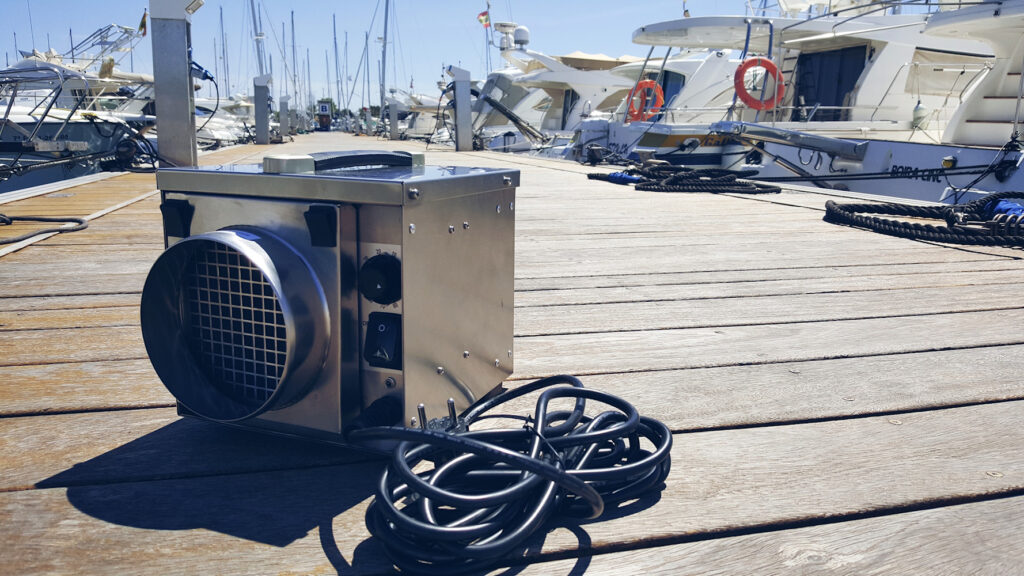
Why Use A Desiccant Dehumidifer? We List Top Benefits
Why Use A Desiccant Dehumidifier? We List Top Benefits
By: Brothers Equipment And Supply
What Is A Desiccant Dehumidifier?
Desiccant dehumidifiers remove moisture from the air without the need for a compressor or refrigerant by using a desiccant material.
They operate more quietly and at far lower temperatures than refrigerant dehumidifiers, even low-grain refrigerant (LGR) machines, using a desiccant wheel, a process called adsorption, as well as a small internal heater.
Desiccant dryers, also known as desiccant dehumidifiers, function highly efficiently and have lower power peaks, making them significantly more environmentally friendly.
Why Use Desiccant Dehumidifier?
Nothing compares to the effectiveness and power of desiccant dehumidifiers when it comes to drying in cool temperatures or drying solid materials like hardwoods, brick, or plaster and lath construction.
This is why desiccant dehumidifiers are perfect for removing moisture from dense materials and intricate construction assemblies because they produce more dryer air than refrigerant dehumidifiers do.
Strong drying in low RH environments: Down to 0% RH, desiccants can remove moisture. Below roughly 30% RH, a conventional refrigerant dehumidifier can no longer function effectively, and a low-grain refrigerant unit will start to perform poorly.
Performance in cold temperatures: In low temperatures, desiccants easily outperform refrigerant dehumidifiers. In those circumstances, refrigerants frequently freeze up or spend a lot of time in the defrost mode.
They aren’t really removing much water from the air in any situation. However, desiccants continue to absorb moisture even at 0° F. In unfinished basements, crawlspaces during the winter, and unheated garages, drying with a desiccant is a particularly efficient (and economical) choice.
Denser materials can be dried more effectively: Desiccants are the best choice for removing bound water from dense materials as hardwoods, plaster, brick, and concrete since they can achieve such low RH values. Additionally, they can efficiently dry down building components like walls, staircases, cabinets, etc.
In particular during the colder, drier months, desiccant dehumidifiers can be a crucial part of your drying plan. Consider including a desiccant in your professional restorative drying equipment selection if you don’t already have one.
What Are The Top Benefits Of A Desiccant Dehumidifier?

Due to its energy-saving and economic advantages, desiccant dehumidification is frequently utilized in a variety of sectors. It can increase the production process’s effectiveness, making the operation more productive.
Desiccant dehumidifiers lower the relative humidity in an area by absorbing moisture from the air using hygroscopic materials (like silica gel).
This kind of dehumidifier is appropriate for a variety of uses, including greenhouses, swimming pools, and pharmaceutical and food processing facilities. Let’s find out more about its advantages.
Desiccant Dehumidifier Benefit 1: Energy Efficiency
The energy-efficient profile of desiccant dehumidification systems is one of its most important features. Comparatively speaking, it uses a lot less electricity than other kinds of dehumidifiers. The use of a desiccant dehumidifier, according to the National Renewable Energy Laboratory, can reduce gas boiler energy costs by almost half.
Its distinctive design, which substitutes ambient air for electricity to power the drying process, accounts for this efficiency.
Desiccant Dehumidifier Benefit 2: Financial Savings
Desiccant dehumidifiers not only lowers overall electricity prices and energy bills, but also enables businesses to spend less on maintenance. Desiccant dehumidifiers require less maintenance because they are built to last for many years, which can greatly reduce the cost of repair and replacement.
Desiccant Dehumidifier Benefit 3: Savings in Space
Additionally, desiccant dehumidifiers take up less room than other dehumidification methods. It is suitable for small-scale enterprises or places with restricted space because it is lightweight, compact, and easy to install. Additionally, you may move it about and put it in places that would otherwise be difficult to access.
Desiccant Dehumidifier Benefit 4: Bettering Air Quality
By eliminating extra moisture from the air, this dehumidification also helps to enhance the quality of the air by reducing the formation of mould, dust mites, and other microorganisms that thrive in moist settings. Additionally, it lowers the chance of allergies and asthma, making the environment healthier for everyone.
Desiccant Dehumidifier Benefit 5: Flexibility
Systems that use desiccant as a dehumidifier are adaptable and have a variety of uses. Desiccant dehumidifiers can maintain the optimal humidity level for any sort of environment, from home settings to commercial operations. To create a more effective arrangement, you can link it with other environmental control systems like air conditioning and ventilation.
For organizations aiming to increase energy efficiency, cost savings, space savings, and air quality, desiccant dehumidification is a great option. It is a stable, cost-effective, and efficient approach for dehumidifying indoor spaces. It is understandable why desiccant dehumidification has grown in popularity across a wide range of sectors given its many benefits. To learn more, get in touch with our staff right away.
Summary: Why Use A Desiccant Dehumidifier?
- Energy Efficient
- Finanical Savings
- Saves Space
- Improved Air Quality
- Flexible and Versatile
If you have any questions about our article, “Why Use A Desiccant Dehumidifier? We List Top Benefits” or need to buy a desiccant dehumidifier feel free to call us at 1-416-912-2205 or contact us in near real-time on Live Chat or social media.
